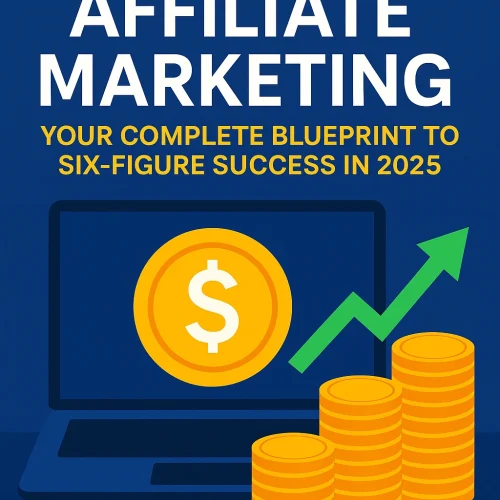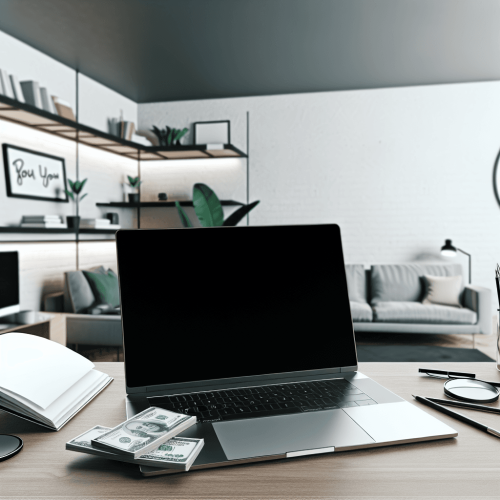About Your Guide Author
Hi there, I’m Stephen – and I’ll be completely honest with you from the start. I’m not going to promise you’ll be making millions from affiliate marketing by next month. What I will share is the real, unvarnished truth about building a sustainable affiliate marketing business based on my journey through this industry.
I’ve spent countless hours researching, testing strategies, connecting with successful affiliate marketers, and yes, making plenty of mistakes along the way. This guide represents everything I wish someone had told me when I was starting out – the practical stuff that actually works, not the get-rich-quick fantasies you’ll find elsewhere.
What You’ll Master in This Complete Guide
This isn’t another surface-level “affiliate marketing basics” post. We’re going deep with actionable strategies you can implement today:
- Brutally honest income expectations and realistic timelines that most gurus won’t share
- Step-by-step technical setup that even complete beginners can follow
- Proven strategies that work without needing thousands of followers or a massive budget
- Legal requirements and tax implications nobody talks about until it’s too late
- The most common (and expensive) mistakes beginners make – and how to avoid them
I’m focusing exclusively on strategies that work for beginners with limited resources. No fluff, no unrealistic expectations – just practical, implementable advice.
The Truth About Affiliate Marketing Income (What Nobody Tells You)
Let’s tackle the elephant in the room right away: “How much money can I actually make with affiliate marketing?”
I’ve studied dozens of industry surveys, connected with affiliate marketers at all levels, and tracked my own progress. Here’s what the data actually shows:
The Real Income Distribution
Based on comprehensive industry research and affiliate network data:
- Approximately 65% of affiliate marketers earn less than $500 monthly, especially in their first 12 months
- Around 25% reach the $500-$2,000 monthly range with consistent, strategic effort
- Only about 10% achieve $2,000+ monthly – these marketers typically treat affiliate marketing as a serious business venture
- The top 1% earning $10,000+ monthly usually have 2+ years of experience and treat this as their primary business focus
What Your Journey Might Actually Look Like
Here’s a realistic month-by-month progression based on real affiliate marketer experiences:
Months 1-3: The Foundation Phase
- Expected earnings: $0 (and that’s completely normal)
- Your focus: Website setup, learning the ropes, creating your first content pieces
- What’s happening: You’re building the foundation, not yet earning
- Time investment: 5-10 hours/week alongside other commitments
Months 4-6: The First Results Phase
- Expected earnings: $5-$50 (your first commissions!)
- Your focus: Consistent content creation, traffic building, optimizing what works
- What’s happening: Search engines start noticing you, first affiliate approvals come through
- Time investment: 8-12 hours/week
Months 7-12: The Growth Phase
- Expected earnings: $50-$300 (significant growth potential)
- Your focus: Scaling what works, improving conversion rates, expanding content
- What’s happening: Compound effect kicks in, older content starts ranking
- Time investment: 10-15 hours/week
Strategic Niche Selection: Finding Your Profitable Sweet Spot
Most affiliate marketing advice tells you to “follow your passion,” but that’s only half the equation. You need passion AND profit potential. Here’s my systematic approach to finding niches that actually make money:
The Three-Pillar Niche Evaluation System
Pillar 1: Market Demand Analysis
Use these specific tools and techniques to validate market interest:
- Google Trends Deep Dive: Look for niches with steady or growing interest over the past 2-3 years. Avoid trending topics that might be fads.
- Keyword Volume Research: Use free tools like Google Keyword Planner, Ubersuggest, or Answer The Public to find niches with sufficient search volume but manageable competition.
- Social Media Validation: Check Facebook groups, Reddit communities, and Instagram hashtags. Active communities indicate buying interest.
Keyword Research Example
| Keyword Type | Monthly Searches | Competition Level | Profit Potential |
|---|---|---|---|
| “best budget laptops” | 18,000 | High | Medium |
| “ergonomic office chair under $200” | 3,400 | Medium | High |
| “home coffee roasting equipment” | 1,200 | Low | High |
Pillar 2: Monetization Potential Assessment
Before committing to any niche, thoroughly research the available affiliate programs:
- Commission Rate Analysis: Look for programs offering 5%+ on physical products or 20-50%+ on digital products
- Cookie Duration Investigation: Longer cookie periods (30+ days) give you more time to earn from clicks
- Payment Terms Review: Lower minimum payouts ($50-$100) are better for beginners
- Program Reputation Check: Research affiliate forums and reviews to avoid programs with payment issues
Top Affiliate Program Categories to Consider
- Software & SaaS: High commissions (20-50%), recurring payments possible
- Health & Wellness: Strong emotional buying triggers, diverse product range
- Home & Garden: Seasonal opportunities, visual content potential
- Personal Finance: High-value products, excellent commission rates
- Online Education: Digital products, higher profit margins
Pillar 3: Competition Analysis
Study your potential competitors to identify opportunities:
- Analyze the top 10 Google search results for your target keywords
- Check domain authority using free tools like MozBar
- Evaluate content quality – can you do it better?
- Look for content gaps you could fill
- Assess their monetization strategies
The Niche Validation Test
Before fully committing, run this simple validation test:
- Create one high-quality piece of content targeting your chosen niche
- Share it in relevant online communities or social media groups
- Monitor engagement, comments, and questions
- If people engage and ask follow-up questions, you’ve likely found a viable niche
Technical Foundation: Building Your Affiliate Marketing Website
Let’s get your website up and running with a setup that’s professional, fast, and optimized for conversions. I’ll walk you through each step with specific recommendations and real costs.
Domain and Hosting: Your Digital Real Estate
Domain Selection Strategy
Your domain name is your brand’s foundation online. Here’s how to choose wisely:
- Budget: $10-15 annually for most domain extensions
- Best practices:
- Include a relevant keyword if it sounds natural
- Stick with .com when available (users trust it most)
- Keep it under 15 characters for easy typing and memory
- Avoid numbers, hyphens, and unusual spellings
Hosting Configuration
Don’t overthink hosting in the beginning. Here’s what you actually need:
- Budget: $3-8 monthly for reliable shared hosting
- Essential features: One-click WordPress installation, SSL certificate included, daily backups
- Recommended providers: Bluehost, SiteGround, or Namecheap for beginners
WordPress Setup: Your Content Management System
WordPress powers over 40% of all websites for good reason – it’s user-friendly, SEO-friendly, and perfect for affiliate marketing.
Essential Initial Configuration
- Permalink Settings: Go to Settings > Permalinks and select “Post name” for SEO-friendly URLs
- SSL Certificate: Ensure your hosting provider has activated SSL (look for the padlock in your browser)
- Basic Security: Install a security plugin like Wordfence (free version works fine)
- Google Analytics: Set up tracking from day one to monitor your progress
Critical Plugins for Affiliate Success
Essential Plugin Stack
- SEO Plugin: Yoast SEO or RankMath (both have excellent free versions)
- Caching Plugin: WP Rocket (premium) or W3 Total Cache (free) for faster loading
- Affiliate Link Management: ThirstyAffiliates or Pretty Links for clean, trackable links
- Image Optimization: Smush or ShortPixel to keep your site fast
- Security: Wordfence for protection against attacks
Legal Pages: Protecting Your Business
These aren’t optional – they’re legal requirements that protect both you and your visitors.
FTC-Compliant Affiliate Disclosure
Here’s a template that meets FTC guidelines:
Affiliate Disclosure Template
Affiliate Disclosure
Last updated: [Current Date]
This website contains affiliate links, which means I may earn a commission if you click on a link and make a purchase. These affiliate relationships never influence my recommendations – I only suggest products I genuinely believe will provide value to my readers.
All opinions expressed on this website are my own honest assessments. The commission I earn helps support this website and allows me to continue creating free, helpful content.
If you have questions about any of my recommendations or this disclosure policy, please contact me at [your email].
Privacy Policy Essentials
- Use a generator tool like TermsFeed or consult a lawyer for custom policies
- Include information about cookie usage, data collection, and user rights
- Update it whenever you add new tools or change practices
- Make it easily accessible from every page of your site
Content Strategy: Creating Content That Converts
Content is the heart of affiliate marketing success. But not just any content – you need strategic content that serves your audience while naturally leading to affiliate conversions.
The Content Architecture Framework
Think of your content strategy like building a house – you need a strong foundation and logical structure.
Foundation Content (60% of your content)
These are comprehensive, evergreen pieces that establish your expertise:
- Ultimate Buying Guides: “Complete Guide to Choosing [Product Category] in 2025”
- In-Depth Reviews: Detailed analysis of specific products with pros, cons, and alternatives
- Comparison Articles: Side-by-side analysis of popular options in your niche
- Problem-Solution Content: Address specific pain points your audience faces
Traffic-Driving Content (30% of your content)
These pieces are designed to attract new visitors through search and social:
- List Posts: “15 Essential [Tools/Products] Every [Target Audience] Needs”
- How-To Tutorials: Step-by-step guides that incorporate your affiliate products naturally
- News and Trends: Timely content about industry developments
- Personal Stories: Your experience with products or solutions in your niche
Conversion-Focused Content (10% of your content)
These are specifically designed to drive affiliate sales:
- Product Roundups: “Best [Products] for [Specific Use Case]” with clear affiliate links
- Deal and Discount Pages: Time-sensitive offers and promotions
- Resource Pages: Curated lists of recommended tools and products
The High-Converting Content Template
Here’s my proven template for creating affiliate content that actually converts:
The PARSE Method for Affiliate Content
P – Problem Identification
Start by clearly identifying your reader’s specific problem or need. Use language they would use to describe their situation.
A – Authority Establishment
Briefly explain why you’re qualified to help. Share relevant experience, research, or credentials without being boastful.
R – Research and Options
Present your research methodology and criteria. Show the options you considered, not just your final recommendations.
S – Solution Presentation
Present your recommended solutions with clear explanations of why each option works best for different situations.
E – Easy Next Steps
Make it crystal clear what action readers should take next, with obvious affiliate links and benefit-focused calls-to-action.
SEO Optimization That Actually Works
Forget keyword stuffing and other outdated tactics. Modern SEO is about creating genuinely helpful content that matches user intent.
Keyword Strategy for Affiliate Sites
- Primary Keyword: Target one main keyword per piece of content
- Secondary Keywords: Include 2-3 related terms naturally throughout
- Long-Tail Focus: Target specific, lower-competition phrases like “best ergonomic office chair under $300”
- User Intent Matching: Ensure your content perfectly answers what people are searching for
On-Page SEO Checklist
- Include your primary keyword in the title, first paragraph, and at least one subheading
- Write compelling meta descriptions that include your keyword and encourage clicks
- Use descriptive alt text for all images
- Include internal links to related content on your site
- Optimize for featured snippets by answering questions clearly and concisely
Traffic Generation: Getting Visitors Without Spending a Fortune
Traffic is the lifeblood of affiliate marketing, but you don’t need millions of visitors to make good money. You need the right visitors – people genuinely interested in your niche and ready to take action.
Organic Search: Your Long-Term Traffic Foundation
SEO takes time, but it’s the most sustainable traffic source for affiliate marketers. Here’s how to approach it strategically:
The Content Clusters Strategy
Instead of creating random blog posts, build topic clusters around your main affiliate products:
- Pillar Content: Create comprehensive guides about broad topics in your niche
- Cluster Content: Write specific articles that link back to your pillar content
- Internal Linking: Connect related articles to boost authority and user experience
Social Media: Quality Over Quantity
Don’t try to be everywhere at once. Pick 1-2 platforms where your audience actually spends time and focus your efforts there.
Platform-Specific Strategies
Pinterest (Great for lifestyle, home, food, fashion niches):
- Create visually appealing pins for your blog content
- Join group boards in your niche for expanded reach
- Use Pinterest SEO to optimize your pins for discovery
YouTube (Perfect for tech, tutorials, reviews):
- Create product review videos with affiliate links in descriptions
- Film unboxing and comparison videos
- Optimize titles and descriptions for YouTube search
Facebook Groups (Community-focused niches):
- Provide genuine value before promoting anything
- Follow group rules about self-promotion strictly
- Build relationships, not just traffic
Email Marketing: Your Most Valuable Asset
Email subscribers are worth 10x more than social media followers because you own that relationship directly.
Lead Magnet Ideas That Work
- Cheat Sheets: “The Ultimate [Niche] Buying Checklist”
- Resource Lists: “50+ Tools Every [Target Audience] Should Know About”
- Mini-Courses: 5-day email course teaching something valuable
- Templates: Ready-to-use templates or worksheets
Monetization Mastery: Converting Visitors into Revenue
Getting traffic is only half the battle. Converting that traffic into affiliate commissions requires strategic thinking and constant optimization.
Affiliate Program Selection Strategy
Not all affiliate programs are created equal. Here’s how to identify the best opportunities:
High-Priority Program Features
Affiliate Program Evaluation Criteria
| Factor | What to Look For | Why It Matters |
|---|---|---|
| Commission Rate | 5%+ physical, 20%+ digital | Higher rates mean more profit per sale |
| Cookie Duration | 30+ days preferred | More time for customers to purchase |
| Payment Schedule | Monthly payments | Better cash flow for your business |
| Minimum Payout | Under $100 | Faster access to your earnings |
| Marketing Support | Banners, links, product feeds | Makes content creation easier |
Strategic Link Placement
Where and how you place affiliate links dramatically impacts your conversion rates.
High-Converting Placement Strategies
- Within Product Comparisons: Place links naturally when discussing specific products
- In Call-to-Action Boxes: Create prominent, benefit-focused buttons
- Throughout Tutorial Content: Link to tools mentioned in how-to guides
- In Email Sequences: Include relevant product recommendations in valuable emails
Conversion Rate Optimization
Small improvements in conversion rates can dramatically increase your affiliate income.
A/B Testing Ideas
- Call-to-Action Text: Test “Check Current Price” vs “Get This Product” vs “View on Amazon”
- Link Colors: Experiment with different button colors and styles
- Placement Timing: Test early vs late affiliate link placement in content
- Disclosure Language: Try different ways of presenting affiliate disclosures
Legal Compliance: Protecting Your Business
Legal compliance isn’t just about avoiding trouble – it’s about building trust with your audience and creating a sustainable business.
FTC Compliance Made Simple
The Federal Trade Commission requires clear disclosure of affiliate relationships. Here’s how to stay compliant:
Disclosure Best Practices
Compliant Disclosure Examples
In-Content Disclosure:
“As an Amazon Associate, I earn from qualifying purchases. This means if you click on an affiliate link and make a purchase, I may receive a commission at no extra cost to you.”
Inline Disclosure:
“I recommend the [Product Name] [affiliate link] for beginners in this space.”
Social Media Disclosure:
Always include #ad or #affiliate prominently in social media posts with affiliate links.
Tax Planning for Affiliate Marketers
Affiliate marketing is a business, which means you’ll need to handle taxes properly from the start.
Essential Tax Considerations
- Business Structure: Consider forming an LLC for liability protection
- Quarterly Payments: You may need to make estimated tax payments if you earn over $1,000 annually
- Deductible Expenses: Track hosting, software subscriptions, equipment, and other business expenses
- Record Keeping: Maintain detailed records of income by affiliate program and business expenses
90-Day Action Plan: Your Path to First Affiliate Sale
Theory is useless without action. Here’s your step-by-step roadmap to launch your affiliate marketing business in the next 90 days.
Days 1-30: Foundation Phase
Week 1: Business Setup
- Days 1-2: Purchase domain and hosting, install WordPress
- Days 3-4: Install essential plugins, create legal pages
- Days 5-7: Complete niche research and create content calendar
Week 2-3: Content Creation
- Week 2: Write and publish your first 3 pieces of foundation content
- Week 3: Create “About” page, set up email capture, apply to initial affiliate programs
Week 4: Optimization
- Set up Google Analytics and Search Console
- Optimize site speed and mobile responsiveness
- Create social media profiles
- Publish 2 more content pieces
Days 31-60: Growth Phase
Focus Areas
- Content Production: Publish 2-3 high-quality articles per week
- SEO Optimization: Implement keyword strategy, build internal links
- Community Building: Engage in relevant online communities and social platforms
- Email List Growth: Create lead magnets, optimize opt-in forms
Days 61-90: Optimization Phase
Performance Analysis
- Analyze which content performs best and create similar pieces
- Test different affiliate link placements and calls-to-action
- Optimize underperforming content
- Expand successful content into comprehensive guides
90-Day Success Metrics
- Content: 15-25 published articles
- Traffic: 500-2,000 monthly visitors (varies by niche)
- Email List: 50-200 subscribers
- Affiliate Programs: 3-5 approved programs
- First Sale: Possible but not guaranteed – focus on building foundation
Scaling Your Affiliate Marketing Business
Once you’ve proven your concept and generated your first affiliate sales, it’s time to think about scaling systematically.
Content Scaling Strategies
Phase 1: Content Expansion
- Update and expand your highest-performing content
- Create content clusters around profitable keywords
- Develop comprehensive buyer’s guides for your top affiliate products
- Add video content to complement written articles
Phase 2: Diversification
- Explore adjacent niches that serve the same audience
- Test different affiliate programs and commission structures
- Create multiple content formats (podcasts, video reviews, infographics)
- Build strategic partnerships with other affiliates
Advanced Monetization Techniques
As your site grows, you can implement more sophisticated monetization strategies:
- Direct Relationships: Negotiate higher commission rates with top-performing programs
- Exclusive Deals: Work with merchants to offer special discounts to your audience
- Product Creation: Develop your own digital products to complement affiliate income
- Coaching/Consulting: Offer services based on your niche expertise
Your Next Steps: From Reading to Doing
You now have everything you need to start building a profitable affiliate marketing business. But information without action is worthless.
Remember, affiliate marketing success isn’t about perfection from day one. It’s about consistent progress, learning from mistakes, and adapting your strategy based on real results.
The affiliate marketers who succeed long-term are the ones who treat this as a real business, focus on providing genuine value to their audience, and maintain patience while building something substantial.
Your journey to affiliate marketing success starts with the first step you take today. What will that step be?






